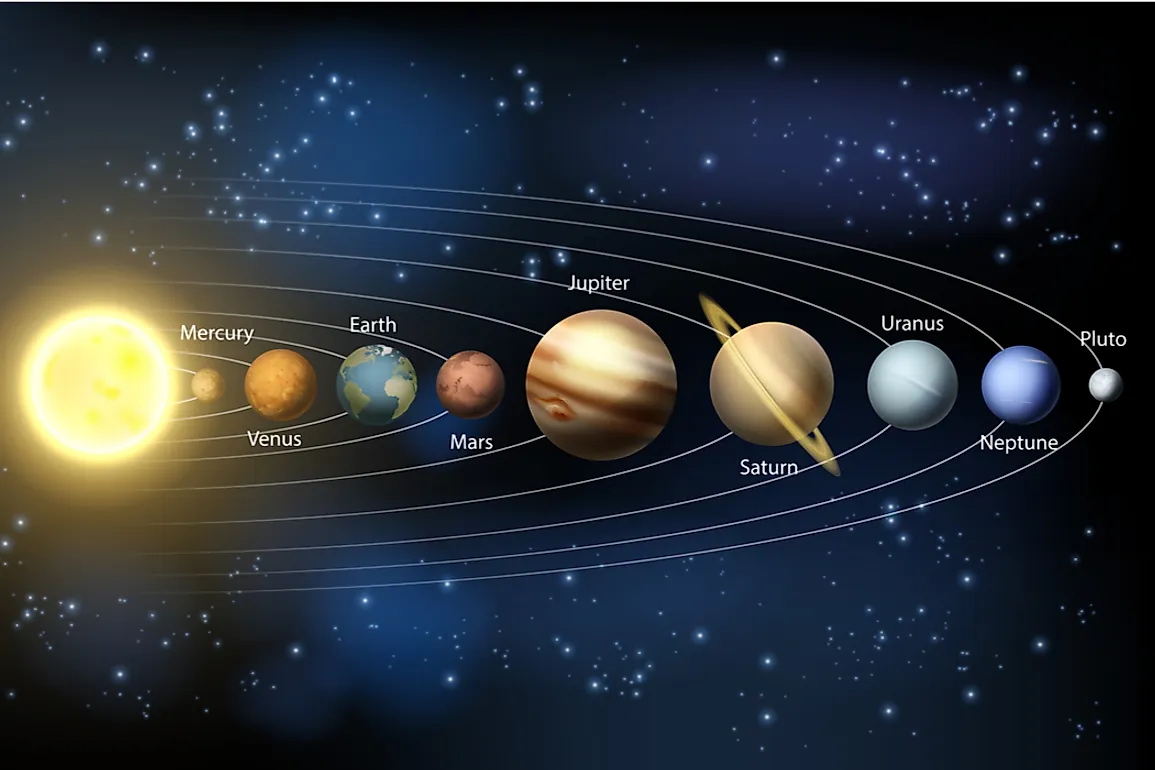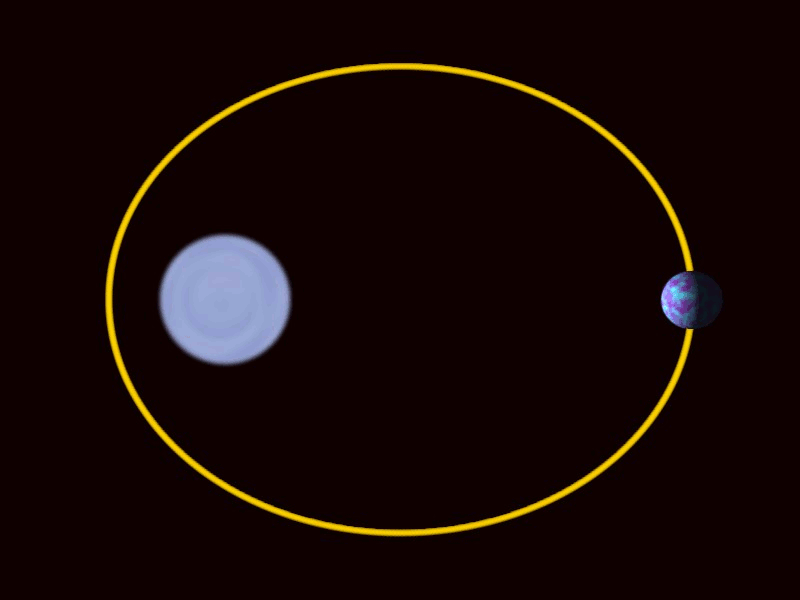The revelation of Copernicus that the Earth rotates around the sun marked a significant change in how we view our place in the cosmos. The Earth was widely thought to be the universe’s centre prior to this. In light of this, when Johannes Kepler put forward his three principles of planetary motion, which stated that planets orbit the sun in elliptical orbits, it was a radical shift in how people viewed the solar system.
The following are the three Kepler Laws that govern how planetary objects move:
- The orbit of a planet is an ellipse, with the Sun at one focus point.
- A planet sweeps out equal areas in its orbit over equal periods.
- The square of a planet’s orbital period is proportional to the cube of its average distance from the Sun.
The motion of the planets in our solar system is explained by these principles. They serve as a foundation for comprehending Newton’s Laws of Motion, which control how everything in the universe moves.
Kepler’s laws are the foundation of astrophysics and hold a very important place in it. If you intend to instruct an advanced physics course, you might need to include this topic in the course materials.
These three laws could be a little difficult for some students to comprehend. Continue reading to learn five successful approaches to teach Kepler’s laws as well as three reasons why they can be challenging.
Students Find Kepler Laws Difficult for Three Reasons
Since laws are abstract, it can occasionally be challenging for pupils to understand their statements. Here are three explanations for why students may find Kepler’s laws challenging.
It’s Abstract
This law seems esoteric to students because it describes how heavenly bodies move. You cannot display these bodies to the students since they are moving in space. They find it challenging to visualise as a result.
The Real World Has No Relevance For Students
Celestial bodies and planetary motion are subject to Kepler’s laws. Many students struggle to understand how these laws apply to their daily lives. They can be perplexed as to why they must study about something so ethereal and esoteric.
Math Is Difficult
Students must be proficient in fundamental algebra and geometry in order to comprehend Kepler’s laws. Some pupils might find it challenging to follow the equations because they can be quite complex.
4 Techniques To Make Kepler Laws More Understandable
Here are five strategies to make Kepler’s Laws a more understandable subject, taking into consideration some of the challenges that students confront.
Inform them The Exciting Life of Tycho and Kepler
Students frequently find laws to be rather uninteresting because they view them as facts they need to memorise. But you can begin with a story to pique their interest and get them moving. The narrative may focus on the scientist who proposed this law or an event that prompted him to make that claim. You could, for instance, discuss Tycho Brahe and Johannes Kepler with the pupils in this situation.
Even if Tycho’s observational data was not required, Johannes Keppler would not have been able to come up with the three laws. Tycho Brahe was a wealthy Danish astronomer who had a lavish laboratory there. Since he came from a noble background, he acquired a rigorous formal education. One of the last astronomers to conduct research without a telescope was he. However, he had created tools for taking measurements that were precise, and his observational data was highly respected at the time.
German scientist Kepler, unlike Brahe, was not born into a noble family. He was a devout man who firmly believed in the Copernican idea. When Kepler was 27 years old, he started working as Brahe’s assistant and was given the task of studying Mars’ orbit.
Kepler and Brahe had quite distinct personalities, with Brahe being considerably more superior. They initially struggled to cooperate. Brahe’s untimely death in 1601 was, however, a blessing in disguise for Kepler because it allowed him access to Brahe’s data as an imperial mathematician. After two years of struggling with Brahe’s data, he finally made progress using these two laws. Ten years later, the third law was found.
The history of how Kepler discovered the first laws is lengthy; we have only provided a brief summary to illustrate how things might be discussed from this angle.
Use Analogies To Explain Core Concepts:
Students occasionally struggle to comprehend concepts when they use technical language. Their minds have a difficult time comprehending the idea being communicated through them since they seem novel. Thus, using analogies to teach new theoretical laws is the most effective method.
When attempting to convey challenging ideas, analogies can be useful. You could, for instance, compare the motion of celestial planets to the orbit of an Earth satellite when explaining Kepler’s laws. You can use examples of elliptical orbits in nature, such the how a leaf falls off a tree, as the rule describes the elliptical motions of space bodies.
Having students build solar system models that show the Kepler Laws in action is another way to help students get more familiar with them. String and various-sized balls (to symbolise the many planets) can be used for this (to represent their orbits). Students can better comprehend how the laws operate by moving the balls around and observing how they interact.
Use Visual Aids To Explain The Three Laws
Physics laws typically explain how the world around us behaves or exhibits natural occurrences. The velocity of heavenly bodies is also mentioned in this situation by the Kepler rules. Now, even the most diligent pupils will not be able to comprehend these concepts without any pictures.
To explain these concepts, you will need a variety of crisp, clear illustrations as a teacher. You can use the following graphics to illustrate each of the three laws.
According to Kepler’s first law, a planet’s orbit is an ellipse with the Sun at one of its focus points. (The elliptical path is simply a little bit stretched from a circular one.)
We can see from the figure that every planet follows an elliptical course around the Sun. However, this path’s eccentricity is too slight for us to distinguish it from a circle.

The second law asserts that each planet covers an equal amount of space in its orbit over an equal amount of time. The fact that the planet doesn’t always move at the same speed is explained by this law. As evidenced by the arc length in Area 1, it moves more quickly as it gets nearer to the sun. However, the arc length of Area 2 indicates that it moves more slowly when it is far from the Sun.
If you carefully examine the figure, you will notice that the planet travelled farther in the first example than in the second case over the course of a single month. The orbit is wider in the second example, whereas it is narrower in the first. Therefore, despite differences in speed, the overall area is the same in each scenario.
The third law explains how planets move in relation to one another. According to a mathematical formula, a planet’s average distance from the Sun is a cube, and its average orbital period is a square. Similar to the previous statement, it means that planets that are farther from the Sun will take longer to complete their orbit around it, and vice versa.
Figure below shows that whereas the end planet only travels a fraction of its orbit after one time period, the nearest planet completes more than three-fourths of its orbit in one time period.
Animations can also be used to explain the paths taken by planets and their orbits in addition to these figures. For instance, the animation below depicts a planet’s orbit around the Sun.

Mention the current application of Kepler’s laws.
The use of Kepler’s laws is widespread, ranging from engineering to astronomy. Students may better understand the relevance of these laws if they are shown how they are applied in daily life.
Satellite Movement
The study of the motion of planets, asteroids, and other space objects in the solar system makes extensive use of Kepler’s laws. They are still used today to create and launch satellites into orbit.
Laws of Newton
The Kepler principles served as inspiration for Newton, who then proposed his own three laws of motion and the concept of universal gravitation. Modern physics is built on these laws.



